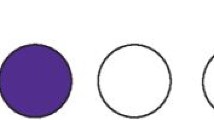Abstract
Data sources
Searches for relevant studies were made using Medline and the Cochrane Controlled Trials Register (CENTRAL). Reference lists of identified articles were searched.
Study selection
Studies selected were those carried out on human teeth, with or without caries, that were treated using a pulp-capping procedure and where the hard tissue and pulp were analysed with the aid of a microscope. Reviews of pulp capping were searched for references.
Data extraction and synthesis
The authors independently extracted the data and assessed the level of evidence of each publication as high, moderate or low. Based on this, the evidence grade of the conclusions was rated as strong, moderately strong, limited or insufficient.
Results
Of 107 studies identified, 21 met the selection criteria. No study had a high level of evidence, one study was moderate and 20 studies provided a low level of evidence. There was heterogeneity between the studies and therefore no meta-analysis was performed. The majority of studies on pulp capping using calcium hydroxide-based materials reported formation of hard tissue bridging: studies on other pulp capping materials such as bonding agents presented inferior results.
Conclusions
Although the majority of studies using calcium hydroxide-based materials reported hard tissue bridging, the quality of the available evidence is low. There is a need for more high-quality studies.
Similar content being viewed by others
Commentary
Direct pulp capping involves the application of a dental material to the exposed pulp in an attempt to preserve its vitality. High clinical success rates have been reported but histological examination has shown chronic inflammation under many pulp caps and diminished success rates.
Carious exposure of the pulp is by far the most common reason for pulp capping although it is also used to treat mechanical and traumatic exposures. The procedure can be carried out with or without partial removal of the pulp (pulpotomy).
There are various materials in routine use for pulp capping, the aim being to induce reparative dentinogenesis across the exposed pulp. Calcium hydroxide is generally accepted as the material of choice. Direct bonding of pulp exposure has been advocated by numerous researchers although this remains controversial.1,2 More recently, excellent results have been reported using mineral trioxide aggregate (MTA).3
The aim of the review by Olsson et al. was to evaluate the available evidence on the formation of a hard tissue barrier after pulp capping. The authors searched Medline via PubMed and the CENTRAL database, along with a search by hand of reference lists from identified studies. The Ovid-Medline database, however, did not appear to have been included and research that was not published in the English language was excluded from the search. As a consequence, pertinent research may have been omitted from this systematic review.
Only 21 studies met the inclusion criteria from a total of 107 studies identified from the literature search. Of the 21 studies, 20 provided low-quality evidence with only one deemed to be of moderate quality: none had the highest level of evidence. Various materials were used as the pulp-capping agent in the studies, including calcium hydroxide, bonding agents and other materials (including MTA). In addition, the heterogeneity between studies was substantial and, as a result, the authors felt it inappropriate to perform a meta-analysis.
Overall, the total evidence grade was insufficient but this does not necessarily imply that pulp capping has no effect or should not be used. It merely highlights the need for high-quality randomised controlled trials in future research. In conclusion, based on current evidence, it seems that calcium hydroxide materials have the most consistent ability to form a hard tissue barrier and remain the material of choice.
Practice points
Calcium hydroxide materials remain an effective method of pulp capping and may induce a hard tissue barrier following exposure of the pulp in non-carious teeth.
Newer materials such as MTA show promising results but more research is required before it is used as an alternative to calcium hydroxide.
References
Hørsted-Bindslev P, Vilkinis V, Sidlauskas A . Direct capping of human pulps with a dentin bonding system or with calcium hydroxide cement. Oral Surg Oral Med Oral Path Oral Radiol Endod 2003; 96:591–600.
de Souza Costa CA, Lopesdo Nascimento AB, Teixeira HM, Fontana UF. Response of human pulps capped with a self-etching adhesive system. Dental Mater 2001; 17:230–240.
Aeinehchi M, Eslami B, Ghanbariha M, Saffar AS. Mineral trioxide aggregate (MTA) and calcium hydroxide as pulp capping agents in human teeth: a preliminary report. Int Endod J 2003; 36:225–231.
Author information
Authors and Affiliations
Additional information
Address for correspondence: Helena Olsson, Department of Endodontics, Faculty of Odontology, Malmö University, SE-205 06 Malmö, Sweden. E-mail: helena.olsson@od.mah.se.
Olsson H, Petersson K, Rohlin M. Formation of a hard tissue barrier after pulp cappings in humans. A systematic review. Int Endod J 2006; 39:429–442
Rights and permissions
About this article
Cite this article
Crane, L. Hard tissue barrier formation after pulp capping?. Evid Based Dent 7, 95 (2006). https://doi.org/10.1038/sj.ebd.6400445
Published:
Issue Date:
DOI: https://doi.org/10.1038/sj.ebd.6400445
This article is cited by
-
No definitive conclusion as to the most effective method of pulp treatment of asymptomatic carious teeth
Evidence-Based Dentistry (2007)



